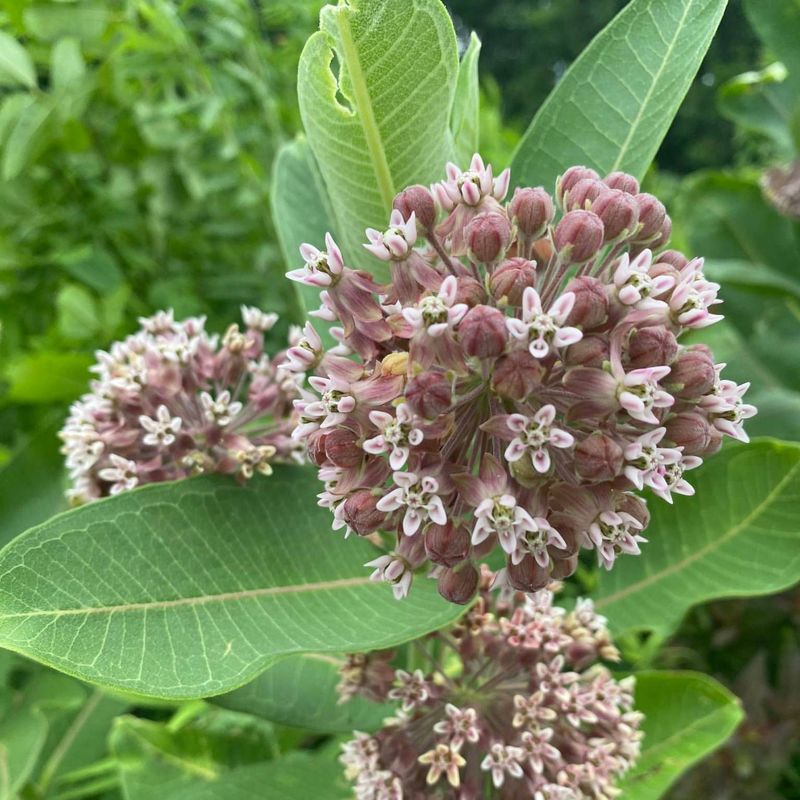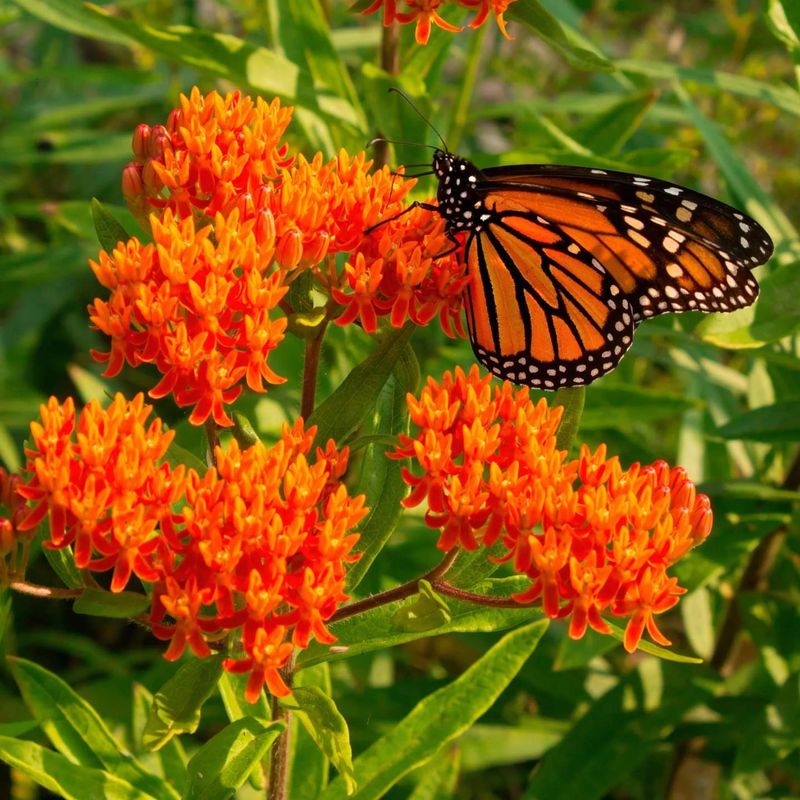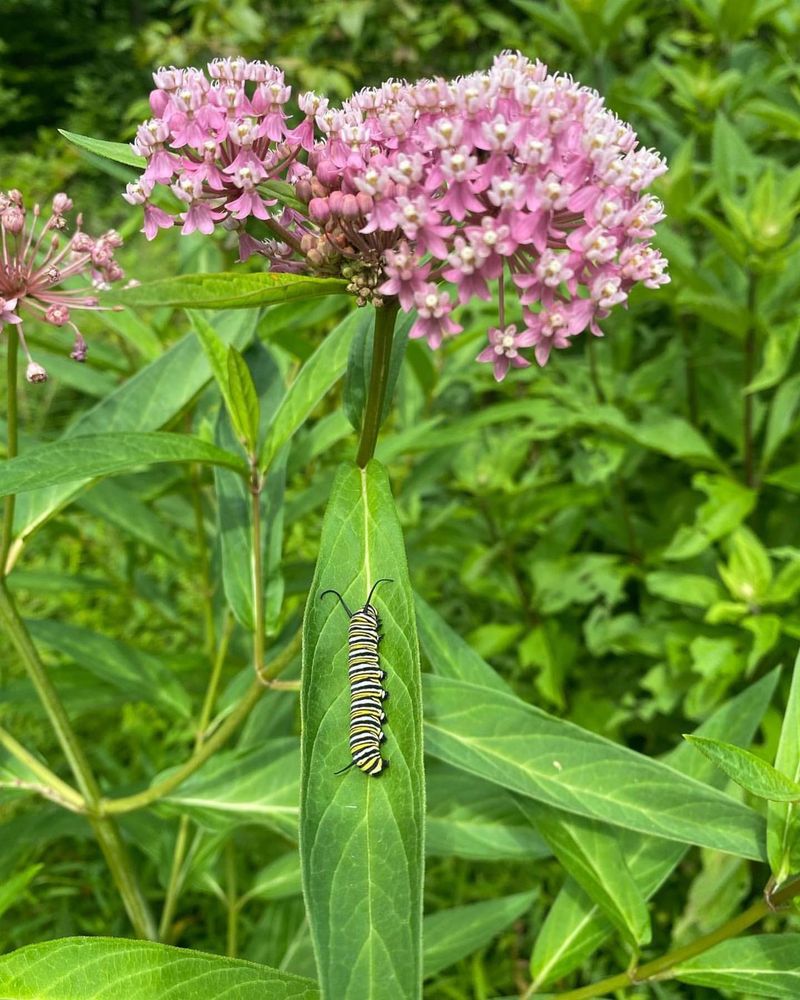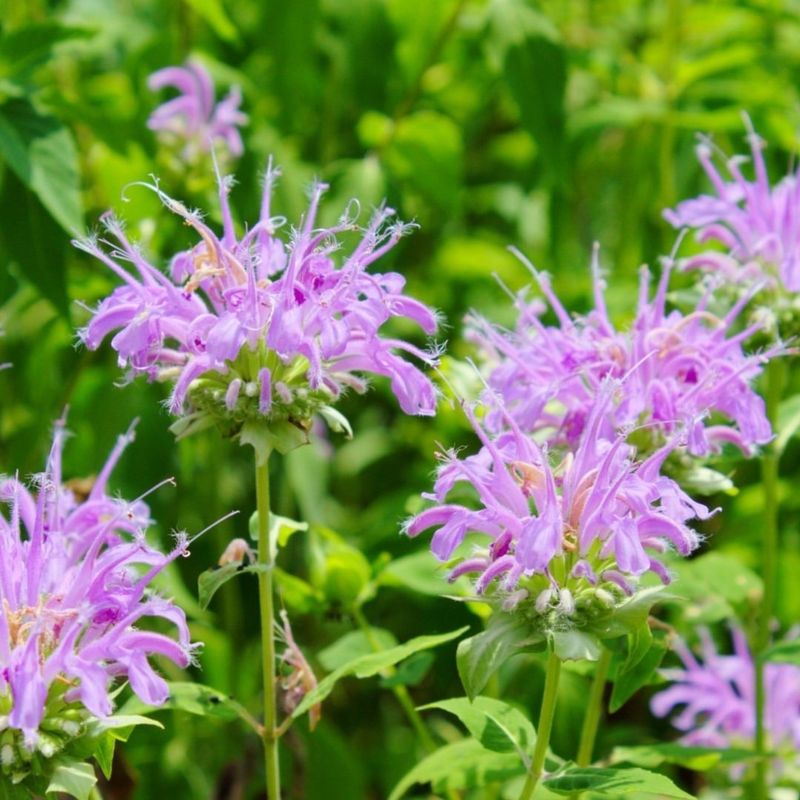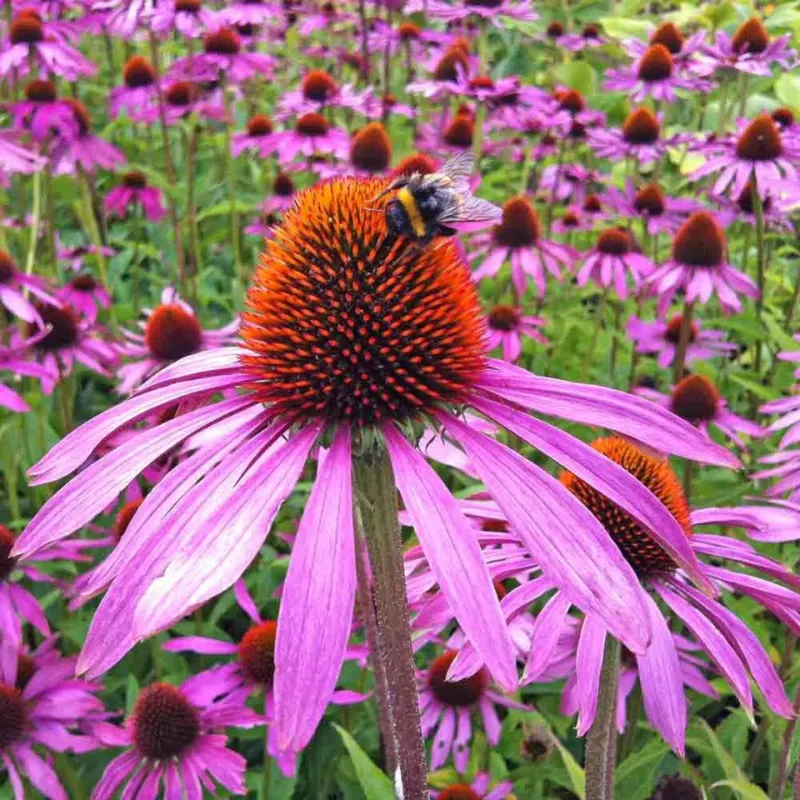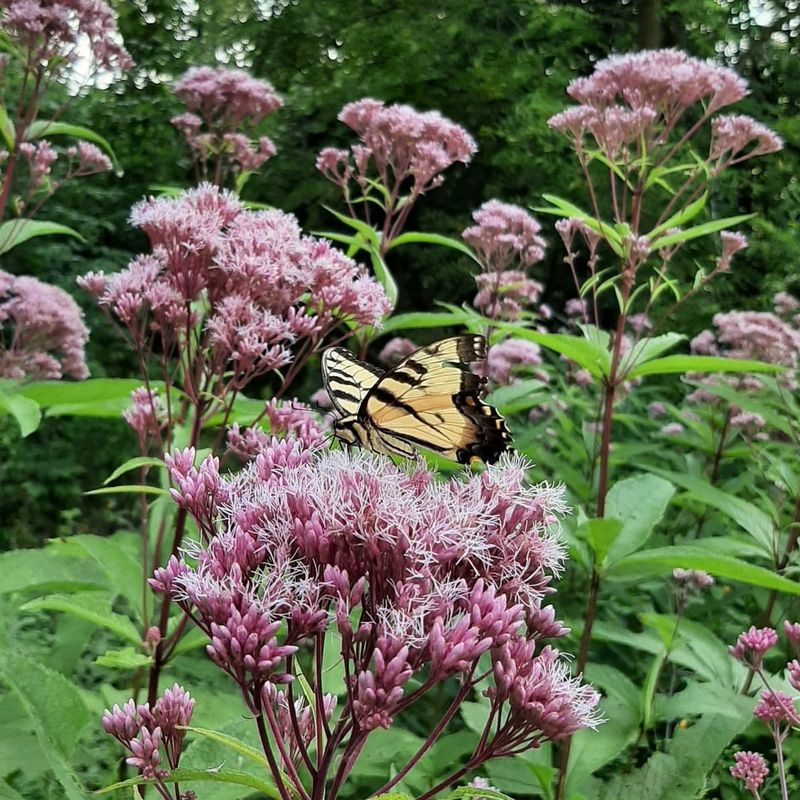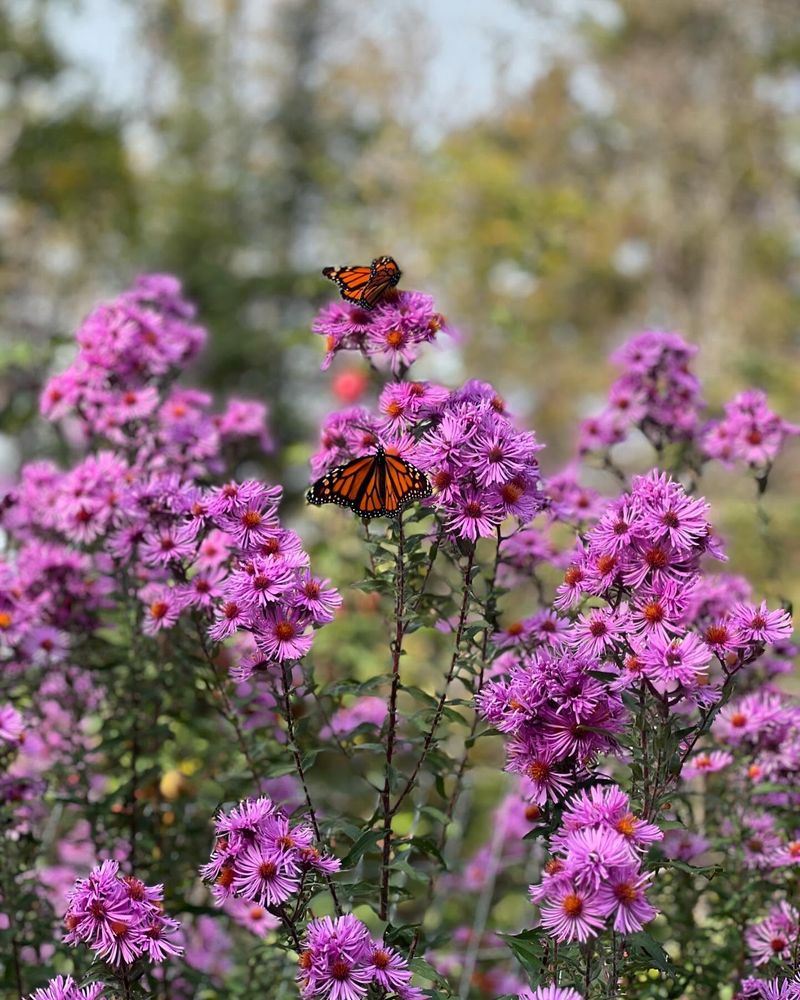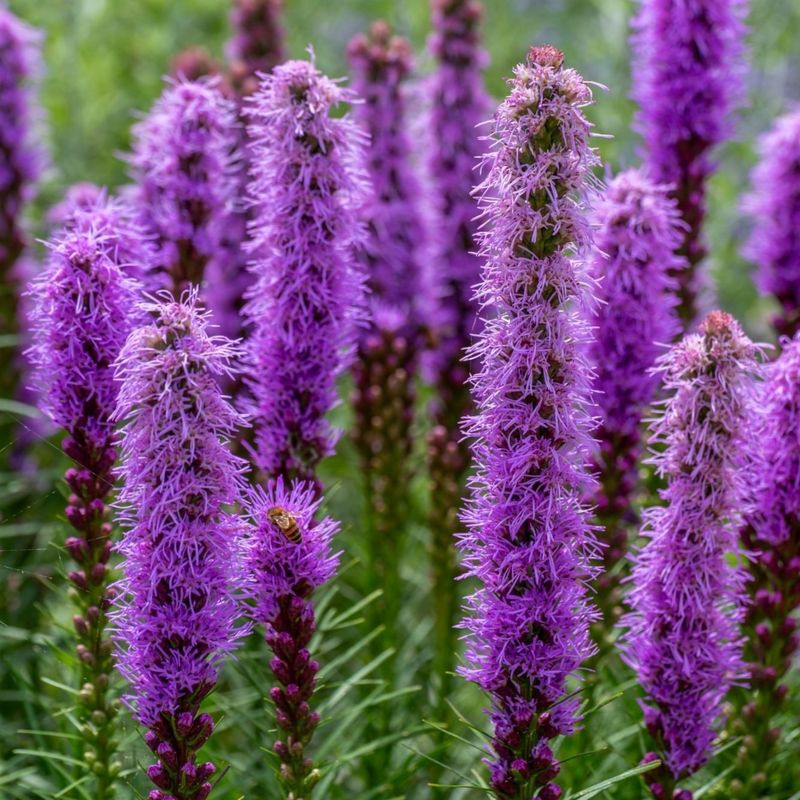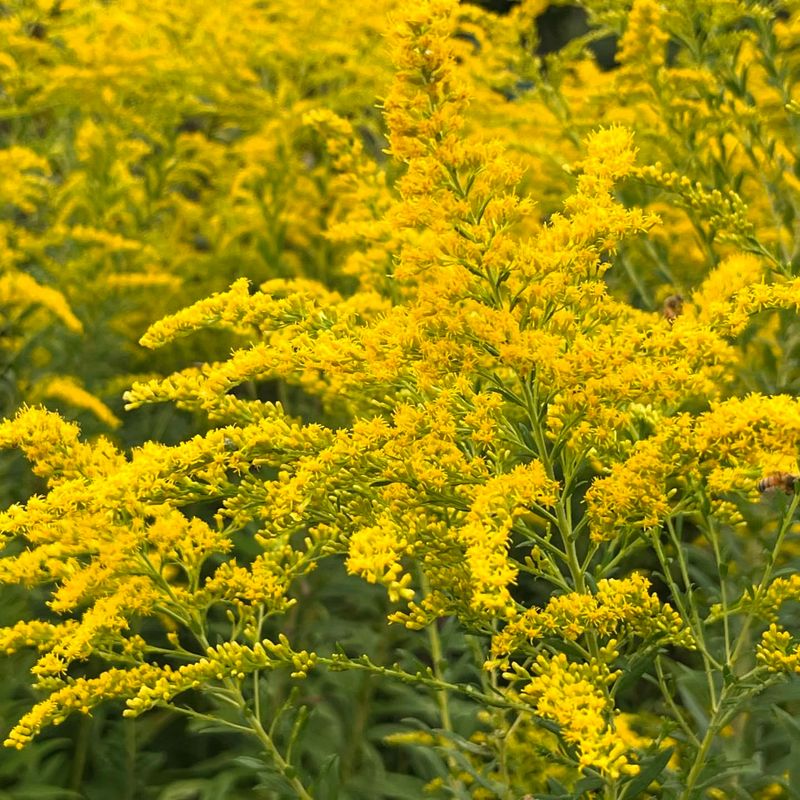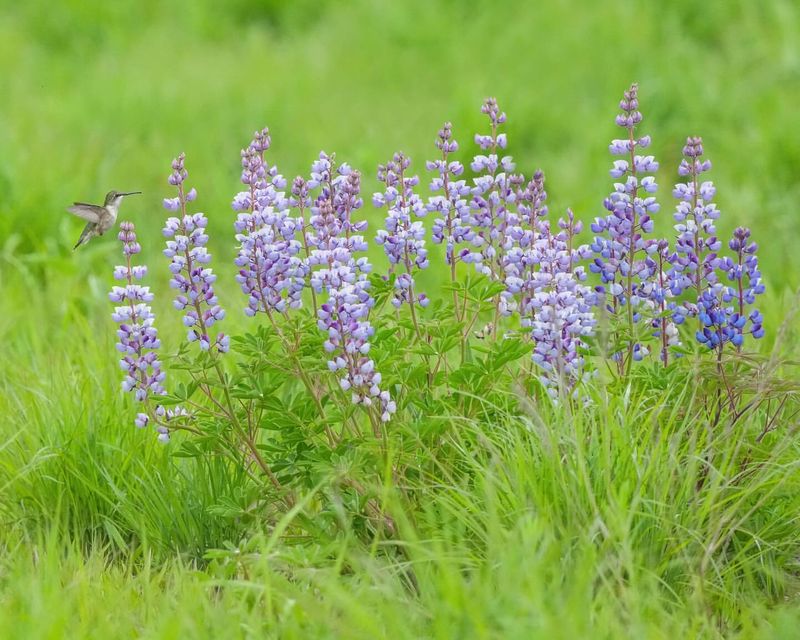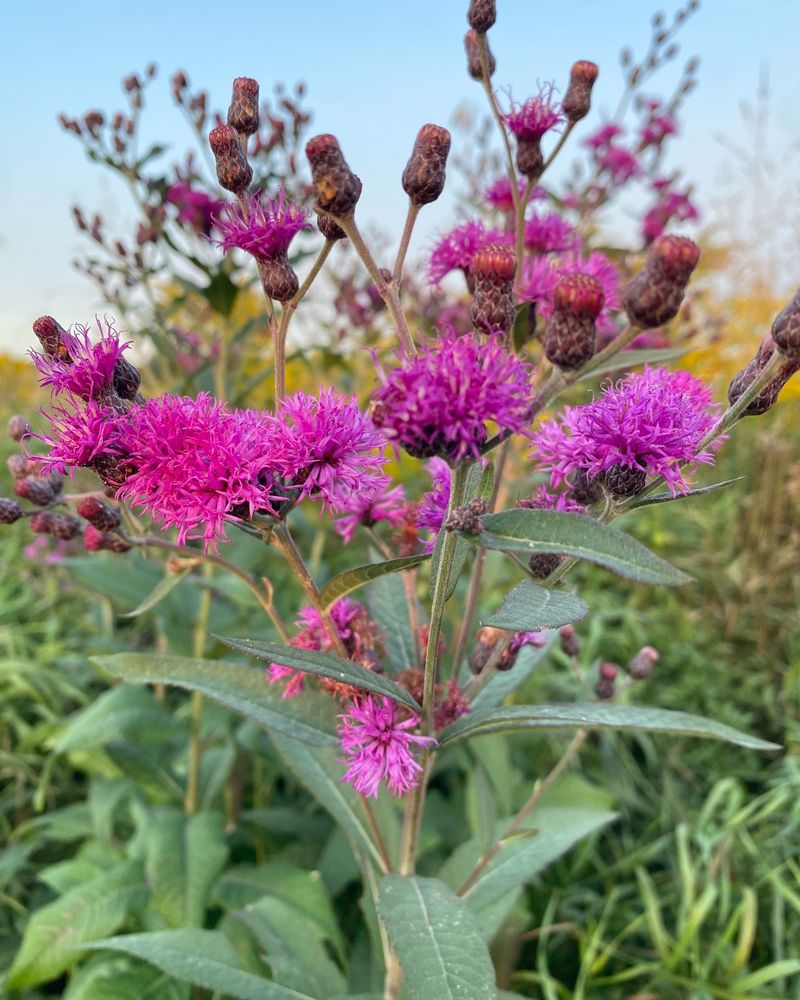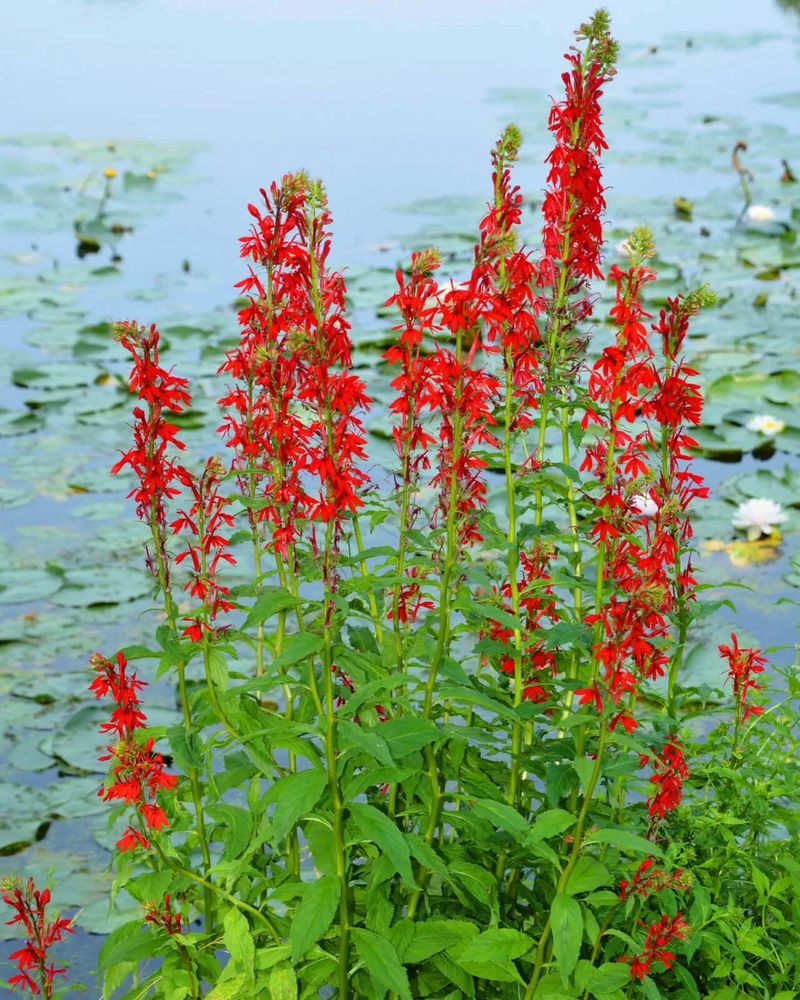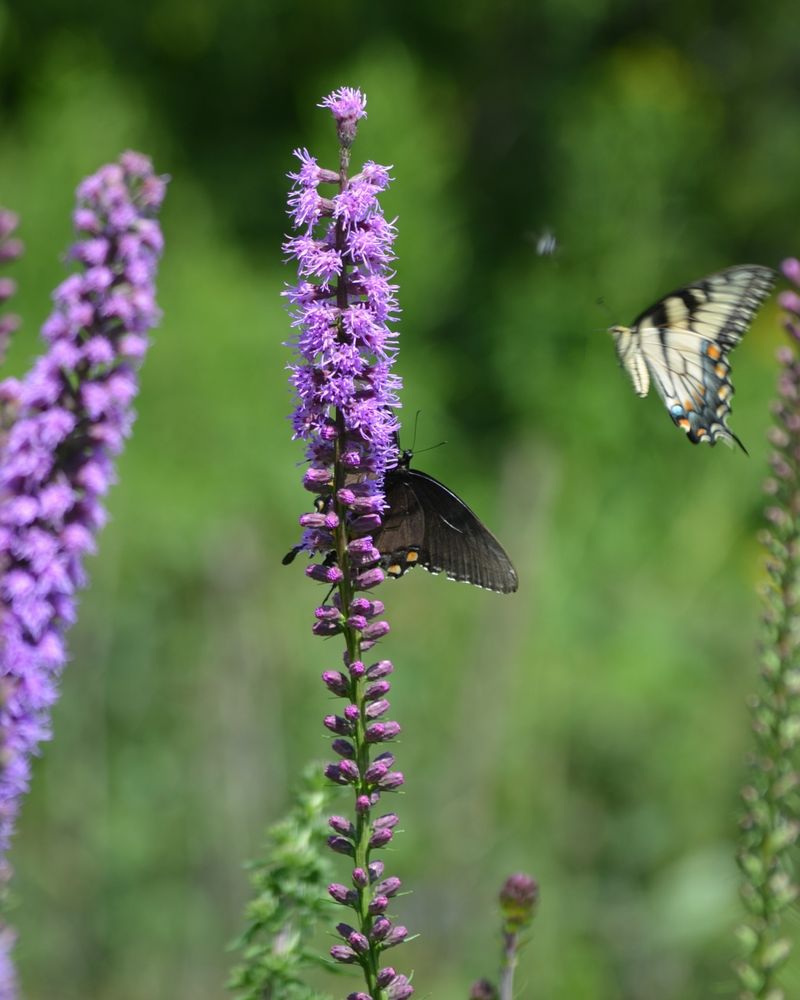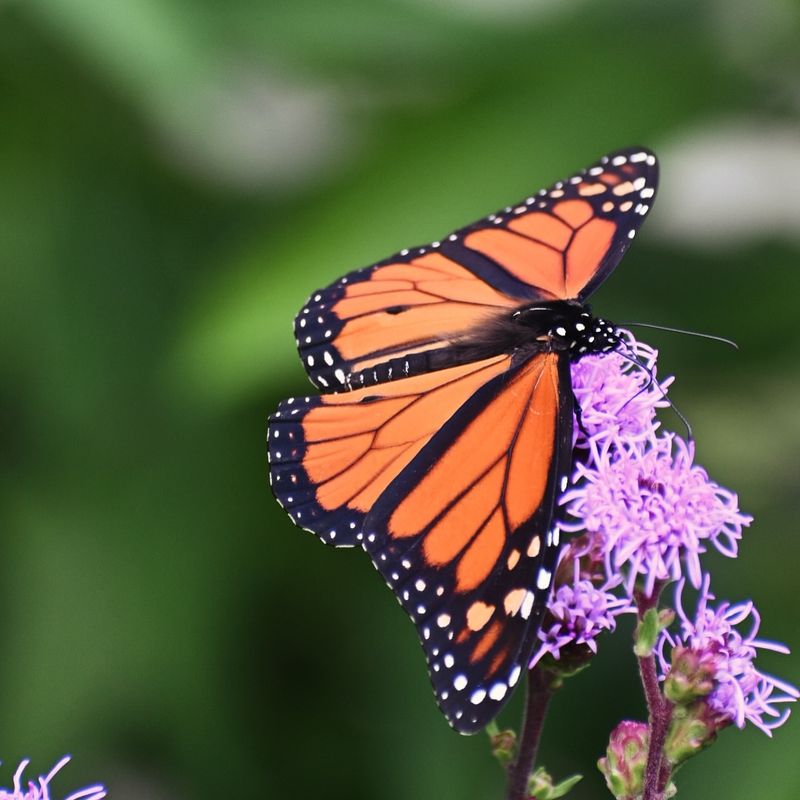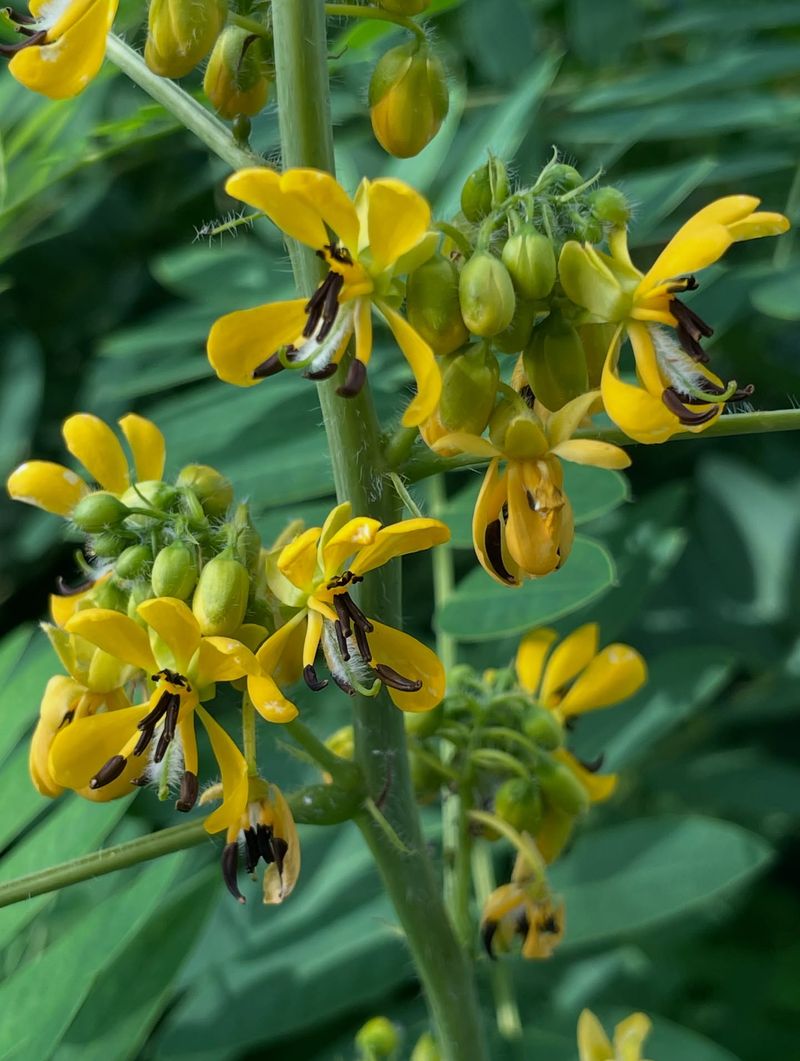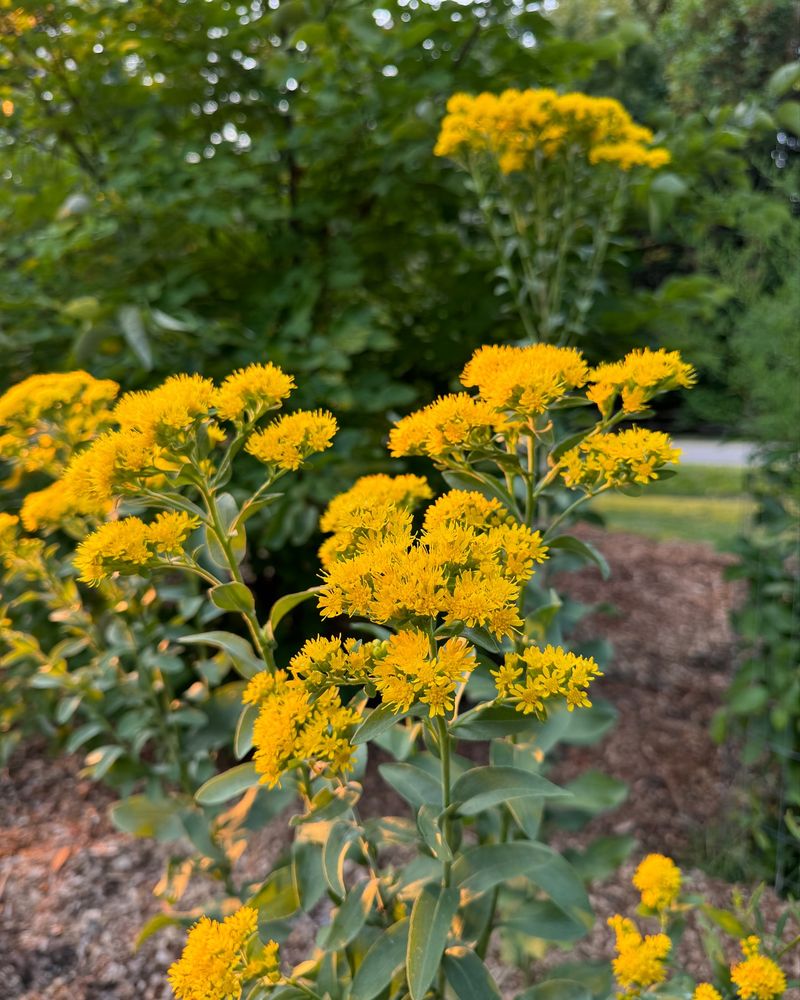Native plants in Minnesota are buzzing with life—and right now, monarch butterflies are dining in style. Imagine vibrant patches of purple, orange, and gold, humming with fluttering wings and the gentle promise of conservation.
I’ve watched milkweed stand tall in my own garden, serving as both food and nursery for caterpillars as they transform. These native beauties not only support monarch migration, they also bring color and joy to your yard.
Let’s celebrate and cultivate the gardens that help our favorite pollinators thrive!
1. Common Milkweed
The ultimate monarch magnet in Minnesota gardens! Females lay eggs exclusively on milkweed because it’s the only food caterpillars can eat. The leaves contain compounds that make monarchs taste terrible to predators.
Look for the distinctive pink flower clusters that smell like honey in midsummer. Minnesota gardeners often find this native plant growing naturally in fields and roadside ditches throughout the state.
2. Butterfly Weed
Bright orange flowers act like flashing neon signs to hungry monarchs flying by. Unlike its milkweed cousins, this variety stays compact and neat in garden borders without spreading aggressively.
The vibrant blooms appear in early summer and continue for weeks. Minnesota gardeners appreciate this drought-tolerant native that thrives in the sandy soils found across much of the state.
3. Swamp Milkweed
Perfect for those tricky wet spots where other plants struggle! The delicate pink blooms attract monarchs and other pollinators throughout summer months. Caterpillars munch happily on the leaves while developing their distinctive striped pattern.
Minnesota’s abundant wetlands provide perfect natural habitat for this native beauty. Gardeners across the state find it thrives near ponds, rain gardens, and other moist areas without becoming invasive.
4. Wild Bergamot
Also called bee balm, this aromatic native sports fuzzy lavender blooms that adult monarchs can’t resist. The nectar-rich flowers provide essential fuel for butterflies preparing for migration or reproduction.
The mint family member spreads gradually through Minnesota gardens, creating beautiful drifts of color. Its natural resistance to deer makes it especially valuable in rural areas throughout the state.
5. Purple Coneflower
Long-lasting blooms keep feeding monarchs from midsummer well into fall migration season. The distinctive cone-shaped centers provide perfect landing pads for butterflies to perch while sipping nectar through their straw-like proboscis.
This hardy perennial handles Minnesota’s temperature swings with ease. Native plant enthusiasts across the state value its drought tolerance once established in prairie-style gardens.
6. Joe-Pye Weed
Towering flower clusters create butterfly feeding stations up to seven feet tall! The mauve-pink blooms appear in late summer just when monarchs need extra energy for their southern migration journey.
Despite its name, this Minnesota native isn’t actually a weed at all. Its impressive height makes it perfect for back borders in gardens throughout the state, especially in areas with rich, moist soil.
7. New England Aster
Late-season bloomer that provides critical fuel for monarchs heading south! The vibrant purple flowers appear just when many other plants have finished flowering. Each daisy-like bloom offers a nectar-rich feast.
Minnesota’s cooling fall temperatures trigger this native plant to burst into color. Gardeners throughout the state appreciate how it bridges the seasonal gap, feeding monarchs when food sources become scarce.
8. Blazing Star
Tall purple spikes create vertical feeding stations that monarchs can’t miss! The unusual bloom pattern allows butterflies to move easily from floret to floret while gathering energy-rich nectar.
Look for wild populations growing in Minnesota’s remaining prairie remnants. Garden centers across the state offer cultivated varieties that maintain the same monarch-attracting qualities as their wild cousins.
9. Black-eyed Susan
Cheerful yellow blooms start feeding monarchs in early summer and continue for weeks! The flat, open flower shape makes nectar easily accessible to butterflies with their long, straw-like proboscis.
This short-lived perennial reseeds readily in Minnesota gardens, creating new plants each year. Native plant enthusiasts throughout the state appreciate its drought tolerance and ability to thrive in poor soils.
10. Goldenrod
Late summer showstopper that’s often misunderstood! Despite common myths, goldenrod doesn’t cause allergies and actually provides essential late-season nectar for monarchs preparing for migration.
The bright yellow flower plumes create a golden haze across Minnesota’s fall landscape. Native varieties behave much better in gardens than their aggressive European cousins, making them valuable additions to monarch gardens throughout the state.
11. Wild Lupine
Early season bloomer that helps fuel the first monarch generation! The distinctive spikes of blue-purple flowers provide nectar for adult butterflies returning from Mexico in late spring.
This Minnesota native prefers sandy soils and open spaces. Conservation efforts across the state focus on preserving wild lupine not just for monarchs but also for endangered Karner blue butterflies that depend entirely on it.
12. Ironweed
Intense purple flower clusters stand tall above late summer gardens! The nectar-rich blooms appear just when monarchs are fattening up for their long migration south to Mexico.
This statuesque native adds vertical interest to Minnesota’s wild areas and gardens alike. Its tough nature allows it to thrive in the variable conditions found throughout the state, from wet areas to average garden soil.
13. Cardinal Flower
Brilliant red blooms create stunning vertical accents that monarchs can spot from far away! Though primarily known for attracting hummingbirds, these nectar-rich flowers feed butterflies too.
Look for this striking native near streams and wetlands across Minnesota. Garden centers throughout the state offer cultivated varieties that maintain the same wildlife value while adapting to more typical garden conditions.
14. Meadow Blazingstar
Feathery purple spikes create butterfly magnets in mid to late summer! This native blazingstar species produces especially nectar-rich flowers that provide high-energy food for monarchs preparing to migrate.
Once common across Minnesota’s vast prairies, this special native now finds refuge in restored habitats. Conservation-minded gardeners throughout the state plant it specifically to support monarch butterflies and other pollinators.
15. Rough Blazingstar
Another blazingstar variety that monarchs adore! The slightly different bloom time from its relatives extends the feeding season for butterflies preparing for their long journey south.
This drought-tolerant native thrives in Minnesota’s well-drained soils. Prairie restoration projects across the state include this important monarch food plant, helping recreate the ecosystem that once covered much of the region.
16. Wild Senna
Unusual yellow flowers and feathery foliage create texture in monarch gardens! Though not as well known as some natives, this plant provides valuable nectar during mid-summer when monarchs are actively breeding.
The interesting seed pods add winter interest to Minnesota landscapes after feeding season ends. Native plant specialists throughout the state recommend this lesser-known gem for gardeners wanting to expand beyond common monarch plants.
17. Stiff Goldenrod
Compact form makes this goldenrod perfect for smaller gardens! The flat-topped yellow flower clusters provide easy landing pads for monarchs to rest while feeding on nectar.
Unlike its aggressive relatives, this well-behaved native stays in bounds in Minnesota gardens. Its late-season blooms appear just when monarchs need extra energy, making it a valuable addition to butterfly gardens throughout the state.


